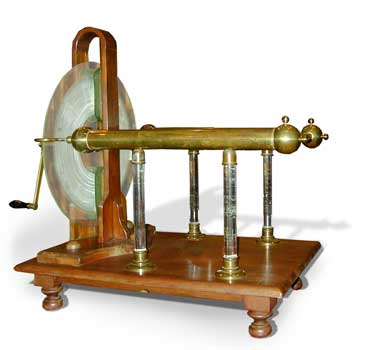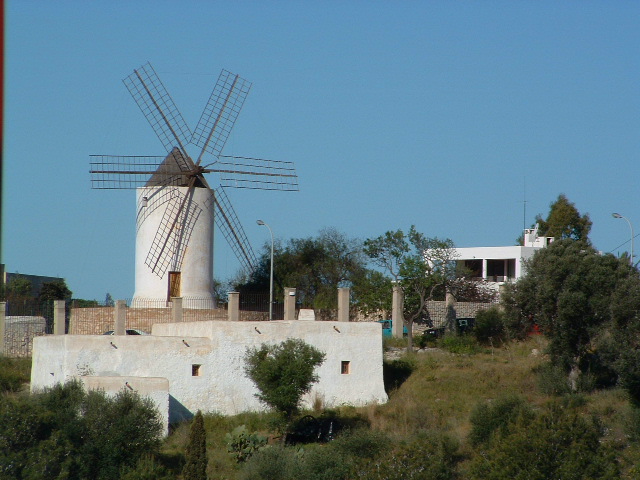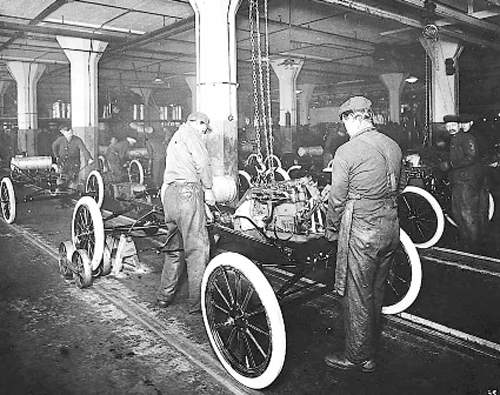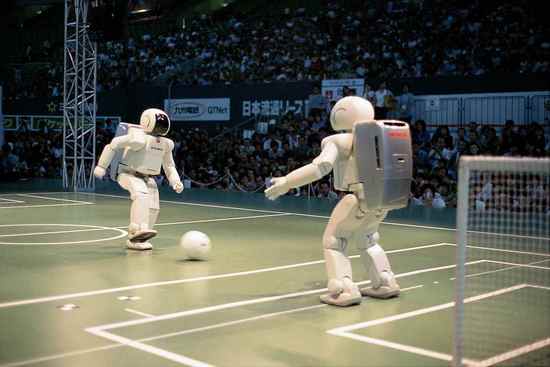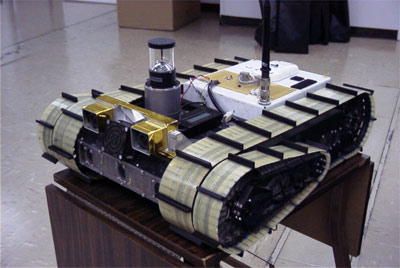
- •Часть I
- •Part I. Materials science and machine tools
- •Mechanical Engineering
- •Materials Science and Technology
- •Mechanical Properties of Materials
- •Machine Tools (Part I)
- •Machine Tools (Part II)
- •Grinders
- •Words and word combinations to the part I
- •Part II. Metals unit 1
- •Metalworking Processes
- •Metalworking and Metal Properties
- •Corrosion
- •Words and word combinations to the part II
- •Part 3 plastics unit 1
- •The Plastic Age
- •Types of Plastics (Part I)
- •Types of Plastics (Part II)
- •Composite Materials
- •Words and word combinations to the part III
- •Part IV. Automobile unit 1
- •Automobile Production
- •Components of the Automobile
- •1) Fill in the dialogue using the words in the box. There are two extra words:
- •Transmission of Power in Automobile
- •Automotive Braking System
- •Driver, Vehicle, and Road
- •Words and word combinations to the part IV
- •Part 5 robots and computers unit 1
- •Machines through the Ages
- •Robots – Moving, Powering, Feeling, and Thinking
- •Industrial Robots
- •Industrial robots
- •Generations of Computers
- •Computer Security
- •Words and word combinations to the part V
- •Part 6 graphs unit 1 Describing Graphs (Part I)
- •Describing Graphs
- •Unit 2 Describing Graphs (Part II)
- •Words and word combinations to the part VI
- •Supplementary reading
- •Part I materials science and technology
- •Part II metals
- •Part III plastics
- •Part IV automobile
- •Part V robots and computers
- •Part VI graphs
- •Listening scripts part I. Materials science and machine tools Unit 1 Mechanical Engineering
- •Part II. Metals Unit 4 Steel
- •Part III. Plastics Unit 2 Types of plastics (Part I)
- •Part IV. Automobile Unit 5 Driver, Vehicle, and Road
- •Part V. Robots and computers Unit 1 Machines through the Ages
- •Unit 3 Industrial Robots
- •Part VI. Graphs Unit 2 Describing Graphs
- •Glossary of engineering terms and abbreviations
- •English-Russian Vocabulary
- •Russian- English Vocabulary
- •Bibliography
- •Appendix 1
- •Appendix 2
Part 5 robots and computers unit 1
Work in small groups. What do these pictures have in common? What are the differences between them? Compare the answers with other students and provide reasons to support your ideas:
|
|
|
|
|
|
Read the text:
Machines through the Ages
Mechanization, or the use of machines to do the work of animals or people, has been with us for centuries. There are six basic kinds of mechanization. Classification depends on whether machines, or combinations of animals and people, are responsible for the three fundamental elements that occur in every type of activity – power, action and control.
The first kind of mechanization is introduced by typing. In typing words, a body produces “the power” to drive a machine, but the machine produces “action”; control is with the body. In one of the mechanized devices the horse and cart, an animal is responsible for power, while the person control the mechanism, but the element responsible for action – the cart’s wheels and axles – is mechanical. The horse and cart is a simple example of mechanism that saves the human body from doing something.
In the second kind of mechanization, hardware is responsible for both power and action. In a car, for example, the wheels, gears and so on provide action while the engine supplies power.
Wind- and water- mills are another kind of mechanized device. Like cars, they use inanimate power source (air or water). But these power sources are not within a person’s control.
The next two types of mechanized devices are all partly automatic. They are mechanically controlled; a person does not have to be present to supervise them.
Simple automatic devices are not new. Soon after the first machine-tools appeared late in the 18th century, engineers modified them so that they could work by themselves for some of the time. An operator would set his machine so that it cut a piece of metal automatically. He would not have to do anything while the operation took place. The control devices here were camshafts and stops.
The fifth example of mechanization is semi-automatic equipment. Here people are required for only some elements of control. In this category are assembly lines with the conveyer systems of the 19th and early 20th centuries with which, for instance, Henry Ford’s first factories assembled cars. In this system parts move from one part of the factory to another one on an automatic conveyer. But people have to be present. They stand next to the lines to fit things onto the parts as they move past.
Finally, the sixth kind of mechanization is truly automatic devices, such as transfer lines, computer controlled machine tools, and robots.
So to get a strict definition of automation, we can say: automation = mechanization + automatic control.
Assignments:
General understanding. Answer the questions:
Give the definition of the term “mechanization”.
What are the main stages of mechanization described in the text?
What are power, action and control?
In what types of mechanization should a person be present?
What is the formula of automation?
According to the text fill in the table:
Mechanization |
Mechanization with automatic control |
||||
Without Mechanical Power |
With controllable Mechanical Power |
With Incontrollable Mechanical Power |
Automatic Devices |
With Semi-automatic Control |
Automation |
1. 2. horse and cart |
1. |
1. 2. |
1. |
1. |
1. 2. 3.robots |
Translate English phrases into Russian:
To be responsible for both power and action; mechanized devices; first factories assembled cars; wind- and water- mills; semi-automatic equipment; truly automatic devices; inanimate power source; computer controlled machine tools; cut a piece of metal automatically; three fundamental elements; save the human body from doing something.
Match the English terms (column A) and their definitions (column B):
A
B
1. to mechanize
a) any of various processing or manufacturing machines, esp. one that grinds, presses, or rolls;
2. typing
b) a building or group of buildings containing a plant assembly for the manufacture of goods;
3. car
c) any automated machine programmed to perform specific mechanical functions in the manner of a man;
4. mill
d) the skill of using a typewriter quickly and accurately;
5. device
e) a device, usually electronic, that processes data according to a set of instructions;
6. equipment
f) a machine or tool used for a specific task;
7. factory
g) to use a machine to do smth that used that used to be done by hand;
8. computer
h) the use of methods for controlling industrial processes automatically, esp. by electronically controlled systems, often reducing manpower;
9. robot
i) a self-propelled road vehicle designed to carry passengers, esp. one with four wheels that is powered by an internal-combustion engine;
10. automation
j) an act or instance of equipping.
CD Tape-5. 1) Before you listen to Jaako Ikonen, Senior Manufacturing Systems Engineer, mind the unknown words and phrases and answer the following questions:
Words and word combinations to be remembered:
1. go through the roof |
неожиданно резко увеличиваться |
2. software n |
программное обеспечение |
3. mechatronics n |
мехатроника (соединение оборудования с миникомпьютерами) |
4. enzyme n |
фермент |
5.blood glucose level |
уровень глюкозы в крови |
6.drop of blood |
капля крови |
7. contamination n |
загрязнение |
8. incredibly adv |
невероятно |
9. vision n |
зрение |
10. error n |
ошибка |
11. innovative adj |
инновационный |
What do you think Jaako’s responsibility is?
One of his products involves biosensors. What do you think a biosensor is?
What do you think is the difference between mechanization and automation?
2) Listen and check the answers.
3) Listen again to find the answers to these questions:
What did he study at college?
Why did the mobile phone company need to automate?
What does a blood glucose monitor do?
Why must the process of manufacturing the monitors be automated?
Describe the work of robots.
What main qualities must a systems engineer have to succeed in his field?
UNIT 2
1) Work in small groups. What could these robots be used for? Compare answers with other students and give reasons to support your answers.
2) Think of other types of robots used in different fields of engineering.
|
|
|
Asimo Robot |
Urbie Robot |
Mars Rover Robot |
Read the text:


